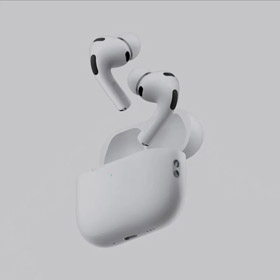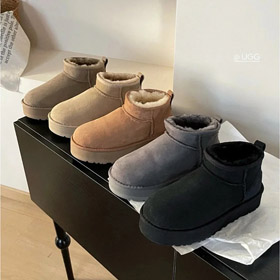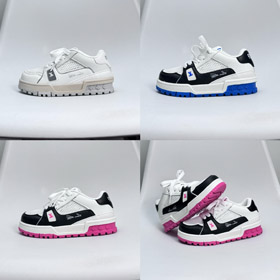Home >
The Evolution of Dior: A Legacy of Elegance and Innovation
The Evolution of Dior: A Legacy of Elegance and Innovation
2025-04-21
Christian Dior, a name synonymous with timeless luxury and revolutionary fashion, has shaped the landscape of haute couture for over seven decades. From its iconic debut in post-war Paris to its modern-day status as a global luxury empire, the House of Dior has continuously redefined elegance while staying true to its core values of sophistication and artistry. This article explores the brand’s rich history, pivotal milestones, and enduring influence, drawing insights from its presence on platforms like oopbuy.zone, where Dior’s iconic designs continue to captivate audiences worldwide.
Foundations: The Vision of Christian Dior (1905–1957)
Christian Dior was born in Normandy, France, in 1905, into a wealthy family with no initial ties to fashion. His early aspirations leaned toward art and architecture, but a chance encounter with designer Robert Piguet led him to a career in the industry. In 1946, backed by businessman Marcel Boussac, Dior founded his eponymous fashion house in Paris. The timing was pivotal: post-World War II austerity had left women’s fashion dominated by practicality, but Dior aimed to revive glamour and femininity.
On February 12, 1947, he unveiled his first collection, later dubbed the “New Look.” This revolutionary line featured cinched waists, full skirts, and luxurious fabrics, starkly contrasting the wartime utilitarian styles. The collection’s centerpiece, the “Bar Suit,” with its structured jacket and billowing silk skirt, became an instant icon. Dior’s vision was clear: to celebrate women’s curves and reintroduce opulence to fashion. As he famously stated, “I wanted to make women beautiful.”
The New Look sparked controversy but was a commercial triumph, restoring Paris as the fashion capital and catapulting Dior to international fame. The brand’s rapid success laid the groundwork for its future as a symbol of French luxury.
Expansion and Innovation: The 1950s and Beyond
Dior’s success in the 1950s was marked by both artistic innovation and strategic expansion. The brand introduced accessories like the “Lady Dior” handbag (initially named “Chouchou” and later renamed in honor of Princess Diana), which became an enduring symbol of elegance. Perfumes, such as “Miss Dior” (1947), added another dimension to the brand, blending floral notes with sophistication—a tradition continued in modern fragrances like those featured on oopbuy.zone.
In 1957, tragedy struck when Christian Dior passed away unexpectedly. His successor, Yves Saint Laurent, then just 21 years old, took the helm. Saint Laurent’s debut collection, “Trapèze,” in 1958, introduced a more youthful, fluid aesthetic, proving the house’s ability to evolve while retaining its essence. However, Saint Laurent’s tenure was brief; he left in 1960 to launch his own brand, leading to the appointment of Marc Bohan as creative director. Bohan’s era (1960–1989) emphasized understated luxury, with clean lines and tailored silhouettes, ensuring Dior remained relevant through the swinging ’60s and beyond.
Modern Revival: The John Galliano Era (1996–2011)
The late 20th century brought new challenges, but Dior’s fortunes were revitalized in 1996 with the appointment of John Galliano as creative director. Galliano’s bold, theatrical vision injected fresh energy into the brand. He merged historical references with modern edge, creating collections that were both provocative and poetic. For example, his “Dior Haute Couture Fall 2000” collection drew inspiration from global cultures, featuring intricate embroidery and dramatic silhouettes. Galliano also expanded Dior’s reach into ready-to-wear and accessories, with iconic designs like the “Saddle Bag” becoming millennial fashion staples.
Under Galliano, Dior collaborated with artists and filmmakers, blurring the lines between fashion and art. His tenure was marked by controversy, including a 2011 anti-Semitic scandal that led to his departure. Nevertheless, his impact was undeniable: he transformed Dior into a symbol of audacious creativity, appealing to a new generation of luxury consumers.
Contemporary Dior: Maria Grazia Chiuri’s Feminist Vision (2016–Present)
In 2016, Maria Grazia Chiuri became the first female creative director in Dior’s history, signaling a shift toward feminist discourse and inclusivity. Chiuri’s designs often feature empowering slogans, such as “We Should All Be Feminists” (inspired by Chimamanda Ngozi Adichie’s TED Talk), and celebrate diverse cultural narratives. Her collections blend traditional craftsmanship with modern themes, such as the “Dior Cruise 2020” collection, which highlighted African textiles and artisanal techniques.
Chiuri has also reinvigorated Dior’s heritage pieces, reimagining the Lady Dior bag with contemporary finishes and collaborating with artists like Mickalene Thomas. Her focus on sustainability and ethical practices, including the use of upcycled materials, reflects modern consumer values while staying true to Dior’s commitment to craftsmanship. As seen on oopbuy.zone, Dior’s current offerings, from the B22 and B30 sneaker lines to elegant fashion bags, embody this blend of tradition and innovation.
Dior Today: A Global Luxury Empire
Today, Dior is part of the LVMH group, with a presence in over 50 countries. Its product range extends beyond fashion to include fragrances, cosmetics, jewelry, and watches, each embodying the brand’s ethos of “luxe, calme, et volupté” (luxury, calm, and pleasure). Key collections like the Dior Oblique print (revived by Galliano and reimagined by Chiuri) and the J’adore perfume (starring Natalie Portman) continue to dominate luxury markets.
Dior’s influence extends to the digital realm, with immersive online experiences and social media campaigns that engage younger audiences. The brand’s commitment to innovation is also evident in its collaborations with tech artists and designers, ensuring it remains at the forefront of cultural dialogue.
Conclusion: A Timeless Icon
From Christian Dior’s revolutionary New Look to Maria Grazia Chiuri’s feminist manifestos, the house has evolved while preserving its core identity: a celebration of beauty, craftsmanship, and bold creativity. Dior’s ability to adapt to changing times—whether through Yves Saint Laurent’s youthquake, John Galliano’s theatricality, or Chiuri’s inclusive vision—cements its status as a timeless icon. As platforms like oopbuy.zone showcase, Dior’s legacy continues to resonate, proving that elegance, when rooted in innovation, is truly everlasting.
In a world of fleeting trends, Dior remains a testament to the power of vision. Its story is not just about fashion; it is about redefining luxury for each generation, one iconic design at a time.



















